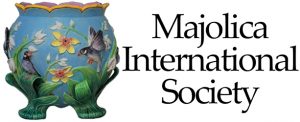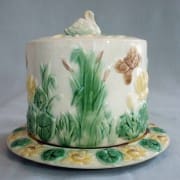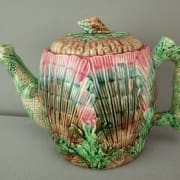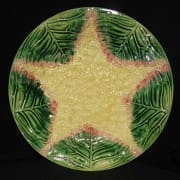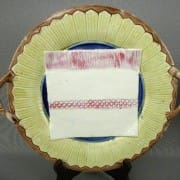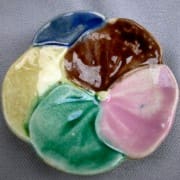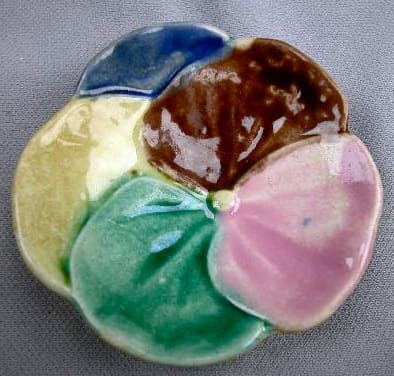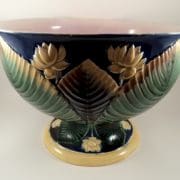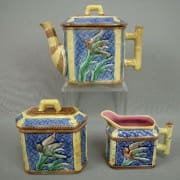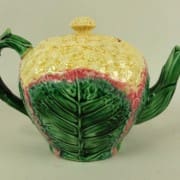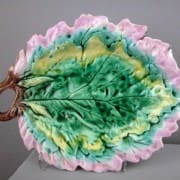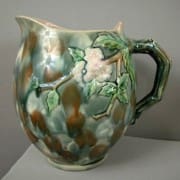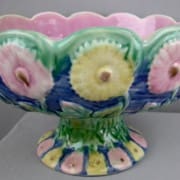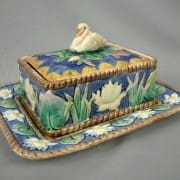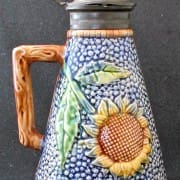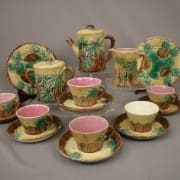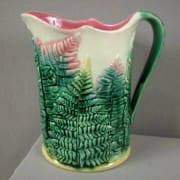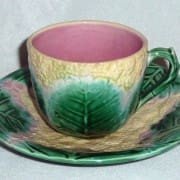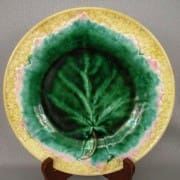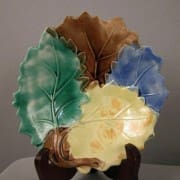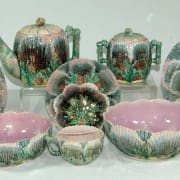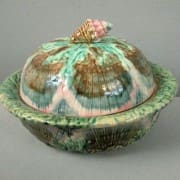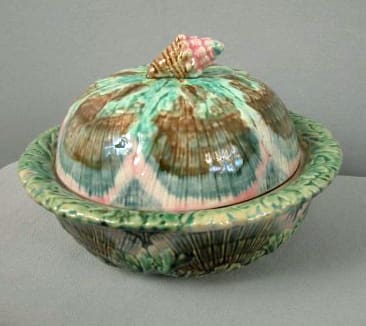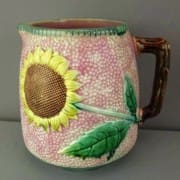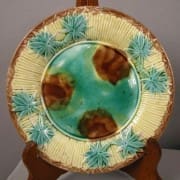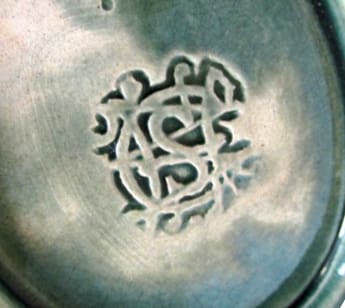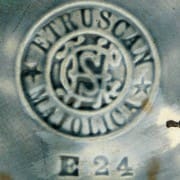Etruscan Majolica (Griffin, Smith & Hill)
The largest and best known of the American majolica manufacturers was Griffen, Smith and Hill of Phoenixville, Pennsylvania. In 1867, John Griffen partnered with W.A.H. Schreiber in establishing a pottery in conjunction with the Philadelphia Iron Works producing fire bricks and Rockingham wares. The business thrived and in 1871 John Smith, an English potter from Stoke-on-Trent joined the firm with Schreiber leaving soon thereafter. Griffin’s sons Henry and George joined the firm along with potter William Hill. Thereafter, the partnership was known as Griffen, Smith and Hill and by 1879 had begun producing majolica. Following Hill’s departure in 1880, the company was renamed Griffen, Smith and Company, although and the “H” in the firm’s monogram continued to be used and the original name is still used by collectors. The name “Etruscan” mirrored Wedgwood’s use of “Etruria” and reflected the archaeological discoveries of fine pottery around Rome. The firm expanded in 1885 and began producing other types of wares as the demand for majolica diminished. David Smith sold his share of the company in 1889 and the factory was almost completely destroyed by fire in 1890.
Etruscan majolica was produced in a multitude of patterns. The most commonly seen forms are leaf plates in various sizes. Small begonia leaf dishes in graduated sizes were produced in many color combinations, the most common being yellow with a variegated center. It has been said that the original molds for these dishes were formed by pressing leaves into soft clay. The dishes were used for pickles or perhaps as ash trays. Also common is a larger leaf tray with twig handle used as a bread tray. Maple leaves in differing forms are seen on both plates and compotes. A full dinner service along with tea items were produced in the Cauliflower pattern, no doubt inspired by the earlier Wedgwood design. The pattern with the largest variety of shapes is a marine motif produced in pink, brown, gray and green and known as Shell and Seaweed. In addition to a dinner service, the pattern decorated tea and coffee items, large trays, graduated pitchers, compotes, butter dish, cuspidor and a humidor. Less common are plates and a tea service in the Bamboo pattern and graduated Hawthorne pitchers. A pedestaled compote or salad bowl decorated with daisies was produced in several colors. A tea service of octagonal shape decorated with a polychrome bird is similar to a popular design of the British manufacturer Thomas Forester. Particularly prized by collectors are a cheese keeper and sardine box with a placid swan forming the finial.
Although rustic, majolica produced by Griffen, Smith and Hill was generally of good quality. While popular among collectors, it remains more affordable than pieces from the top English manufacturers. There is no doubt that many of today’s most prestigious majolica collections began with an Etruscan leaf plate. Most Etruscan majolica was marked. The earliest mark was an impressed monogram “GSH” in stylized script. After 1880, the monogram was placed within a circle bearing the words “ETRUSCAN MAJOLICA.” Other impressed letters and numbers indicate the pattern.
Photo Credits:
Strawser Auctions
Live Auctioneers
Ebay images
Madelena Antiques
Antiques from Trilogy
Philppe Meunier & Juan-Alonso Defrocourt
Karmason Library
